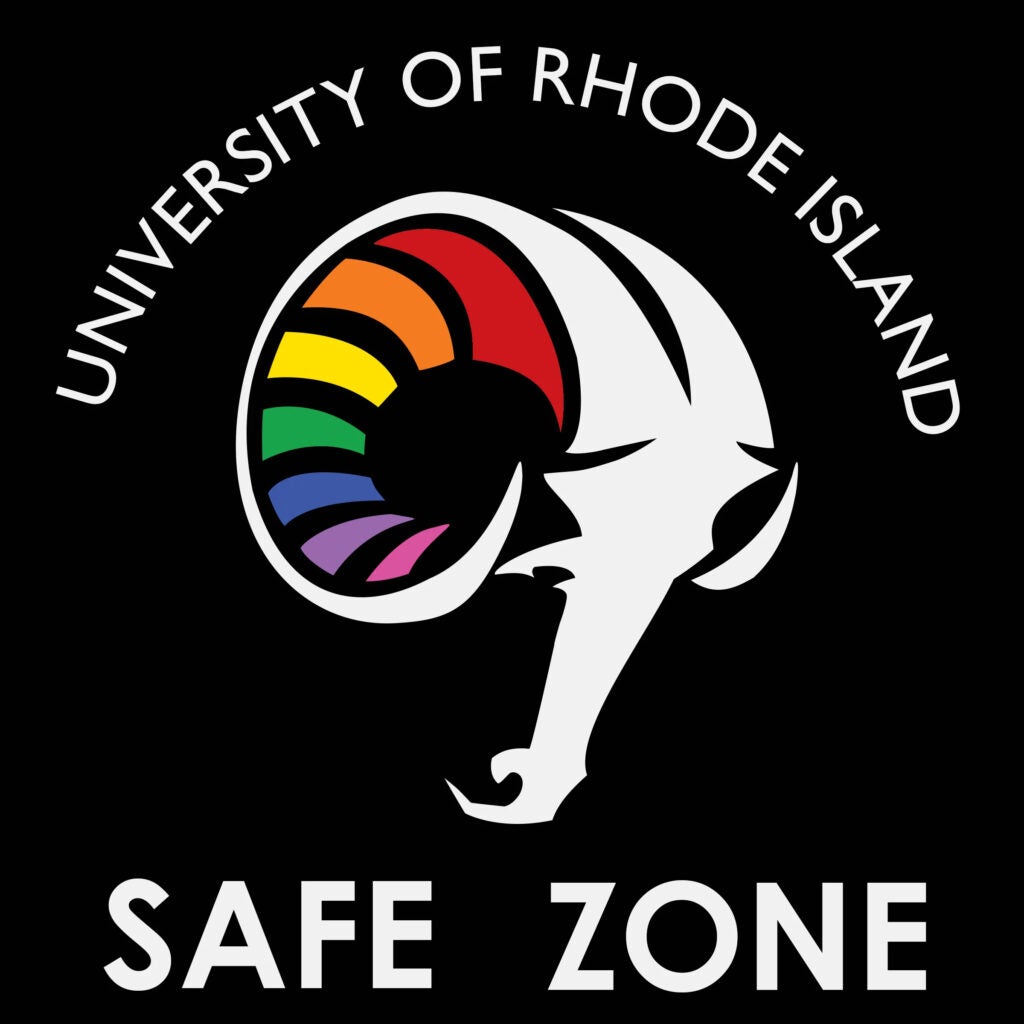
The Safe Zone Project
We offer a 2 hour workshop to train on basic issues affecting the LGBTQ community and how to be an ally. Register for one of our open Safe Zone dates below, or contact our office to schedule a workshop for your office, department, or group!
Purpose
- To increase awareness, knowledge, and support of LGBTQ people and issues.
- To build a visible support network of LGBTQ Allies on URI’s campus.
- To improve the campus climate for LGBTQ people at URI.
We value your interest in the Safe Zone program. At this time, Safe Zone sessions will not be offered during the fall semester. We look forward to re-launching sessions in the future and will share updates as soon as they are available. Thank you for your patience and continued support.
register nowThe Safe Zone Program evolved from the Welcome Project at URI which involved students, faculty, and staff in response to issues and needs of URI’s LGBTQ community. In conjunction with other programs and activities sponsored by the URI Gender and Sexuality Center, the Welcome Project played a significant role in advancing URI to recognition in The Advocate’s Comprehensive Guide to Colleges and Universities with the Best Programs, Services, and Student Organizations for LGBT Students.
The Safe Zone Logo is an active symbol of support for the LGBTQ community, people, families and friends. Posting this logo publicly demonstrates one’s dedication to being an ally to the LGBTQ community. Interested parties can get a Safe Zone logo by attending any of our Safe Zone trainings!
Safe Zone Facilitator Training
The Safe Zone Facilitator workshop is a 2 hour workshop that’s designed to train students, faculty, and staff on how to lead our Safe Zone Workshops and facilitate them to any group, whether on or off campus.
Purpose
- To explore our own awareness, knowledge, and skills concerning LGBTQ student, faculty, and staff terms, issues, concerns, and culture.
- To address group facilitation approaches.
- To explain the foundations and philosophies of an ally-building program.
Advanced Safe Zone Tracks
Trans Identities & Lives
Trans Identities & Lives is our first Advanced Safe Zone Track. Once you attend Safe Zone, you become eligible for our Advanced Tracks. Trans Identities & Lives is a 2 hour workshop that explores gender and trans issues from a broad perspective. We learn about language, concepts, development, and more.
Purpose:
- To improve awareness, knowledge, and skills for trans and gender related issues on the URI campus.
- To improve campus climate for trans, gender non-conforming, and genderqueer people at URI.
- To provide a visible network of allies for the trans, gender non-conforming, and genderqueer community at URI.
Race and Ethnicity
Race and Ethnicity is our second Advanced Safe Zone Workshop. Once you attend Safe Zone, you become eligible to attend the Race and Ethnicity workshop. Race and Ethnicity is a 2 hour workshop that focuses on exploring identity, social group membership, privilege, oppression, and intersections of race, ethnicity, sexuality, and gender. Purpose:
- To understand the basic concepts surrounding identity, privilege, oppression, and intersectionality.
- To explore one own’s identity characteristics and how those impact interactions with others.
- To delineate the distinctions and interactions between race, ethnicity, sexuality, and gender.
Spirituality and Religion
Spirituality and Religion is our third Advanced Safe Zone Workshop. Once you attend Safe Zone, you become eligible to attend the Spirituality and Religion workshop. Spirituality and Religion is a 2 hour workshop that focuses on exploring identity, social group membership, privilege, oppression, and intersections of spirituality, religion, sexuality, and gender.
register nowFluid and Non-Binary Identities
Fluid and Non-Binary Identities is our fourth Advanced Safe Zone Workshop. Once you attend Safe Zone, you become eligible to attend the Spirituality and Religion workshop. Fluid & Non-Binary Identities is a 2-hour workshop that explores fluidity and non-binary perspectives through the lenses of history, biological sex, gender, and sexuality.
register nowReproductive Rights
Reproductive Rights is our fifth Advanced Safe Zone Workshop. Once you attend Safe Zone, you become eligible to attend the Reproductive Rights workshop. Reproductive Rights is a 2-hour workshop that explores the history of Roe v Wade, birth control, STI prevention, the cycle of liberation, and how to advocate for reproductive justice.
Register now